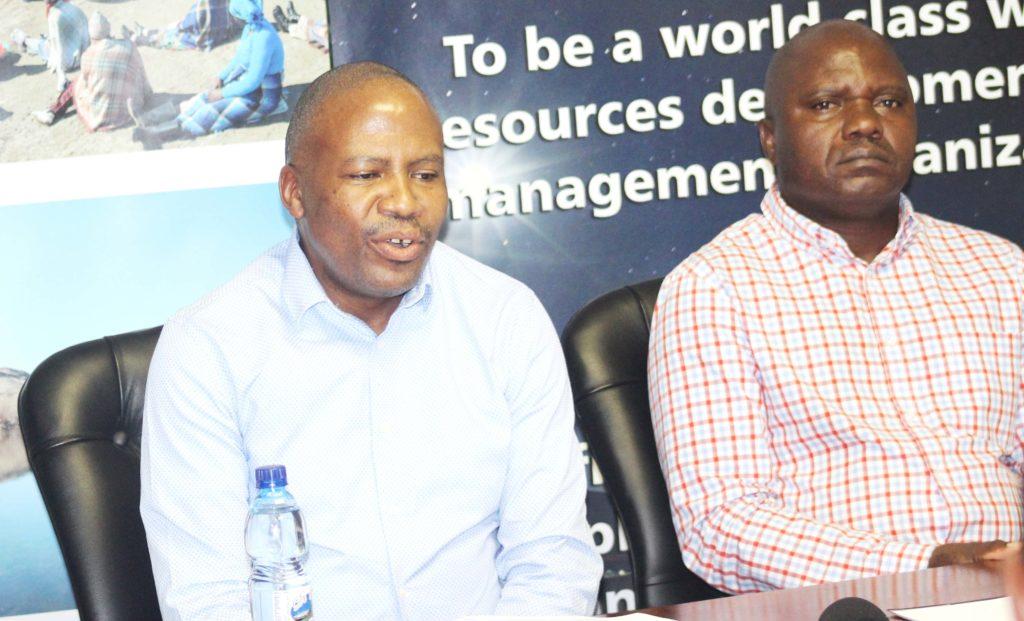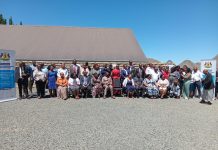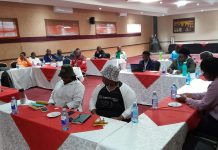Africa-Press – Lesotho. South Africa’s Gauteng province, the heartbeat of its financial and industrial might, could be hit by massive water shortages soon owing to dwindling levels in Katse Dam, which have hit the lowest mark since the reservoir was first filled in 1997.
This development might also lead to electricity outages and a spike in power tariffs in Lesotho as the reduced amount of water has in turn resulted in reduced generation output of the ’Muela hydropower plant.
According to the Lesotho Highlands Development Authority (LHDA), Katse Dam – a critical source of the Lesotho Highlands Water Project (LHWP) and Africa’s second largest double-curvature arch dam – is only 18.21 percent full.
“The Katse Dam is presently in a critical position as its levels stand poorly at 18.6 percent,” South Africa’s Department of Water and Sanitation said in a statement on Wednesday last week.
Gauteng, which touts itself as the leading financial nerve centre and manufacturing hub of sub-Saharan Africa and contributes 35 percent of Africa’s most sophisticated economy’s GDP, broke into a cold sweat last week when it issued a red alert to residents on the water situation.
A country’s gross domestic product is the measure of the size of its economy.
It is the market value of all goods and services produced in a country in a given period, usually a year. Any economic activity will increase GDP – as long as the activity is recorded.
Statistics South Africa’s most recent data puts South Africa’s total GDP at R4.35 trillion in 2016.
Gauteng’s contribution was R1.5 trillion, or 34.64 percent. Gauteng was key to trade and other connections between the continent’s economies and, according its premier David Makhura, was “the seventh largest economy in Africa”.
Gauteng’s 35 percent share of South Africa’s estimated GDP of US$285.8 billion would be $100 billion, placing it seventh – ahead of Kenya, Ethiopia and Tanzania.
The province’s ability to produce for the continent could now be placed in jeopardy due to water shortages. The South Africa’s Department of Water and Sanitation indicated that the levels of the Katse dam were a far cry from the 54.7 percent the dam recorded last year at the same time.
“Last week the dam was at 19.7 percent,” it said.
This alarming development poses a threat to generation of electricity at the ’Muela hydropower station in Butha Buthe which takes advantage of water from Katse dam to generate electricity.
This also raises the prospect that for the first time, water transfer to South Africa could be suspended if there are no sustained rains in the highlands as it will be practically impossible to keep releasing water.
There is a level below which the Katse Intake Tower – which is located approximately 18km north of the dam – will not be able to draw water from the dam.
Due to its position and design, there is a certain volume of water in the reservoir that cannot be accessed via transfer tunnels. This dead storage is approximately 430 million cubic metres (m3).
Total capacity of the reservoir is 1 950 million m3. Tente Tente, Acting CEO of LHDA, the LHWP’s implementing authority, said this is the first time the water level in the Katse Dam has been this low.
“The Southern Africa region has in recent times been affected by low rainfall and Lesotho is no exception. As a consequence, the water levels in the LHWP dams have declined. ”
It is important to note that currently there is no inflow of water from the Mohale Dam into the Katse Dam, while the tunnel connecting the two dams is closed for maintenance.
Therefore the water level in the Katse Dam is gradually falling as the water is being transferred to South Africa. This is one of the reasons why the water level in Katse Dam is now at 18.21%.
On whether dwindling water levels could affect generation of electricity at Muela, he said: “Definitely, the reduced amount of water has in turn resulted in reduced generation output of the ’Muela hydropower plant.
Due to the low levels of water, the LHDA has reduced the amount of water that is being transferred to South Africa and therefore the electricity generated has also reduced. ”
“Yes, Basotho may indirectly be affected by this situation because in the short term, the reduced amount of water that is being transferred to South Africa will result in reduced royalty revenue that goes into the Lesotho Government coffers.
“It is important, however, to note that once the amount of water that is delivered to South Arica is subsequently increased to catch up with the under deliveries, the foregone royalty revenue will be recovered.
“What will never be recovered is the loss in production of electricity and hence revenue to Lesotho. The low water levels also adversely affect the on-going aquaculture operations,” he said. Minister of Water Affairs Samonyane Ntsekele was not reachable yesterday as he is currently out of the country.
The Department of Water and Sanitation (DWS) in Gauteng has urged water users to heighten water conservation efforts so as not to deplete the levels of Vaal Dam – South Africa’s second biggest dam by area and fourth largest by volume.
Katse supplies the Vaal Dam. The department said: “Water consumers are therefore advised to use water sparingly and with consideration for others. ” Lesotho gets about R700 million a year from selling water to South Africa – a significant fraction of government revenue.
’Muela hydropower station, with relatively modest generating capacity, was built as part of the LHWP Phase 1 and generates only a portion of Lesotho electricity needs – 72 megawatts.
The remaining energy requirements, more than 70 megawatts, are imported from South Africa and Mozambique. Before the station was built in 1998, Lesotho was 100 percent dependent on South Africa for electricity.
If Katse dam eventually runs dry, Lesotho will be forced to depend entirely on imported electricity. Minister of Energy and Meteorology Tsukutlane Au was in a meeting yesterday when Public Eye contacted him.
The volatile energy supply situation in South Africa has on occasion affected Eskom’s ability to honour export agreements, and there were times when Lesotho was unable to import the necessary electricity to top up its own supply.
Eskom – the state-owned utility which supplies about 95 percent of South Africa’s power – has a mountain of debt and is reliant on government bailouts to remain solvent.
It is also contending with operational issues – most of its power stations are nearing retirement age and have not been properly maintained, while the construction of the two new plants are running years behind schedule and way over budget.
South Africa has experienced intermittent power outages known as load shedding since late 2005, a measure Eskom said was necessary to prevent the national grid from collapsing.
The last round of load shedding was inflicted in South Africa in March. Schedules were in place for up to 15 hours each day in some places. Katse dam is the result of a 1986 LHWP agreement between Lesotho and South Africa.
The idea of drawing water from Lesotho was a no brainer as South Africa had to solve a problem: the economic hub of Gauteng needed water and getting it uphill from KwaZulu-Natal would use up too much electricity.
Lesotho, on the other hand, had lots of water, from Summer rainfall and Winter snow on its 3 800m mountain peaks, but no dams. At inception, the highlands water project was designed to include five phases implemented over a period of 30 years and expected to transfer about 70 cubic meters per second of water to South Africa.
Phase I, already completed in 2003 and inaugurated in 2004, was split into Phases 1A and 1B – construction of Katse dam and Mohale dam respectively. Both phases 1A and 1B also involved the construction of infrastructure such as tarred roads, feeder roads, bridges, camps, health facilities as well as environmental and social programmes.
Not much different from the Katse Dam, Mohale Dam remains in an equally poor state. The dam dropped slightly from 33.2 percent last week to 33.1 percent.
The Department of Water and Sanitation said this is not a significant improvement from last year at the same period when the dam recorded 24.9 percent.
A new dam, Polihali in Mokhotlong, is planned to supplement Katse, in the second of five phases to develop Lesotho into a full-blown water resource for the whole region.
Some water will also go to Botswana and Namibia. But this expansion has been delayed for at least two years. Polihali was originally scheduled for completion in 2018 but has been repeatedly postponed.
It is a strategic intervention to improve water availability in Gauteng. Comprising two major reservoirs enclosed by a 145m dam wall, it will send water through a series of tunnels and along the Ash River in the Free State into the Vaal system.
For More News And Analysis About Lesotho Follow Africa-Press






